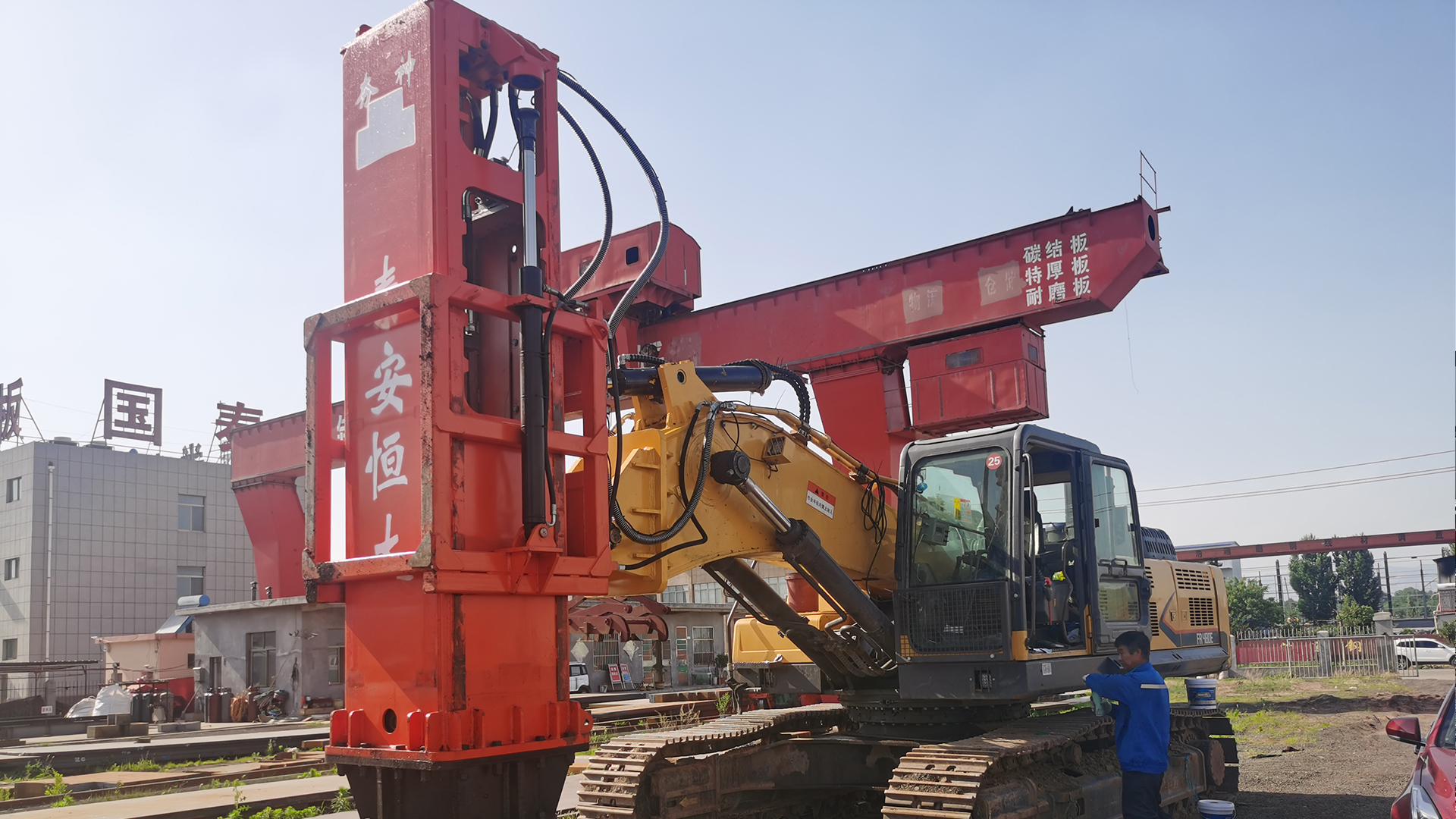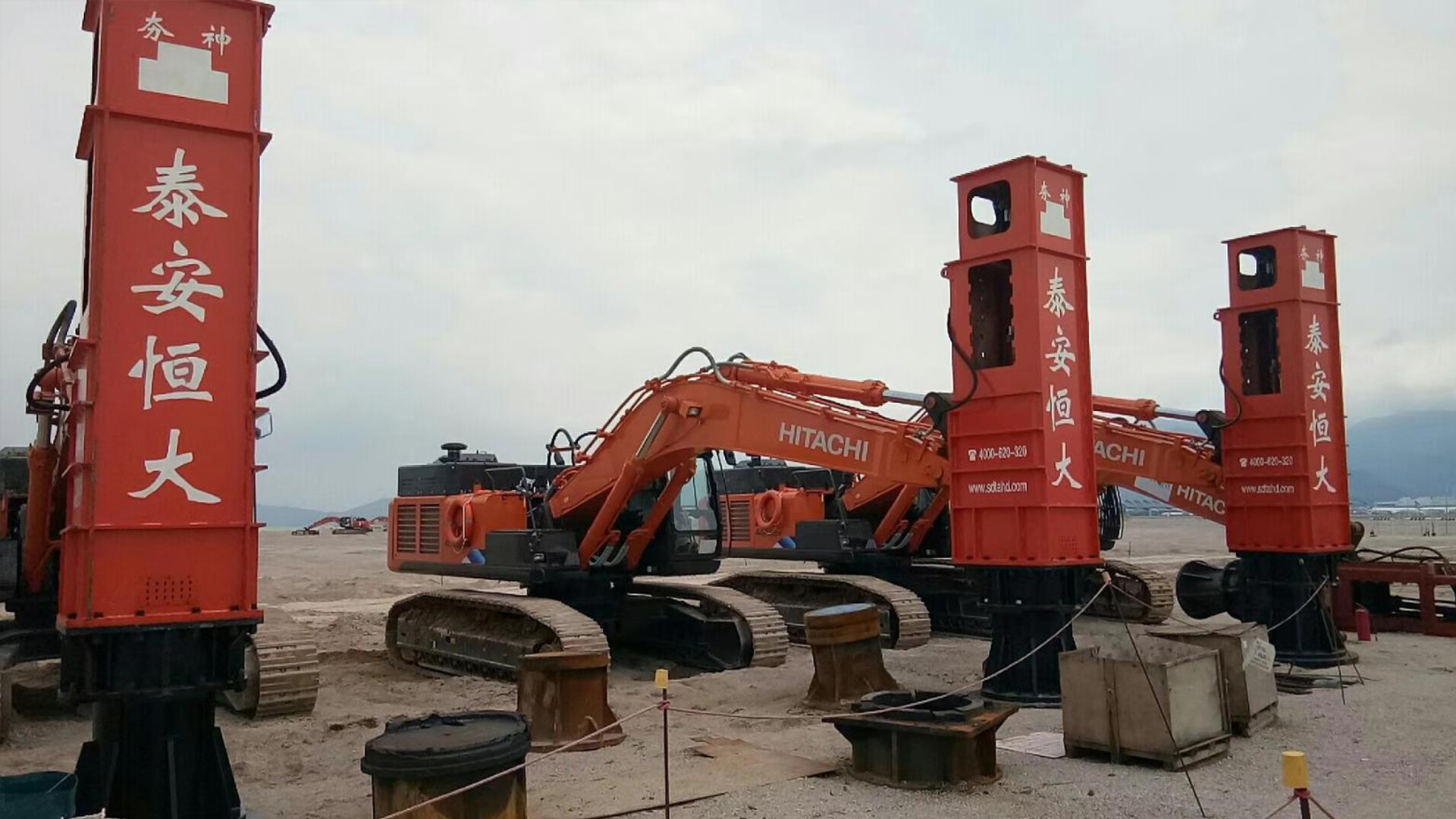update time:2022-09-15 09:50:05
Views:1385次
The RIC attachment currently being manufactured by Hangshen is mountable on a regular hydraulic craw...
The RIC attachment currently being manufactured by Hangshen is mountable on a regular hydraulic crawler excavator in the 30t to 65t operating weight category. During controlled impact the RIC’s 1.5m diameter foot stays in contact with the ground, ensuring efficient impact energy transfer to the ground at all times. Energy is imparted by dropping the weight through a relatively small height of up to 1.2m at a rate of between 30 to 80 blows per minute.

The energy and deflection of the soil is monitored and recorded at each location, which allows the geotechnical engineer to determine when effective treatment is complete. It also enables the engineer to identify weak zones (red dots) or debris zones throughout the pad so that any remedial actions that may be required can be minimized resulting in cost savings.

RIC is a process where loose subsurface soils are improved using an excavator-mounted 7.5 ton hydraulic hammer. The hammer is rapidly raised and lowered onto a 1m diameter plate, which densifies the soil, in-place, without the need for undercut and replace. The average compaction point is hit 30-80 per minute.

The energy and deflection of the soil is monitored and recorded at each location, which allows the geotechnical engineer to determine when effective treatment is complete. It also enables the engineer to identify weak zones (red dots) or debris zones throughout the pad so that any remedial actions that may be required can be minimized resulting in cost savings.
What is rapid impact compaction used for?
Rapid Impact Compaction densifies loose-fill soils of up to ...
What are the advantages of rapid impact compaction?
It was recognised early on that the RIC technique, due to it...